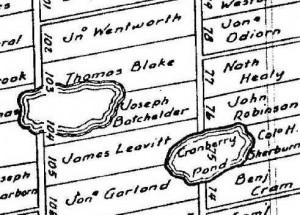History

Founded in 1768 by John Cram, initially Pittsfield was a collection of farms with several small centers of activity: The Lower City, Upper City, South Pittsfield, Knowltons oldmap.jpg (37441 bytes)Corners and the Berry District. Each of these places had a number of homes and some combination of stores, churches, schools and mills. Within a few decades, the “Lower City” along the Suncook River became the dominant political, social and industrial center of activity in Pittsfield. The town of Pittsfield, New Hampshire was incorporated on March 22, 1782 and its first meeting house erected in 1789. The first church was erected in 1789 in what now houses the present Pittsfield Community Center The first school was constructed in 1777 near Catamount Mountain across from the Quaker Burying Ground.
From the very beginning, industry played an important role in Pittsfield economy. Upon his arrival, Cram erected saw and grist mills. About 1820, James Joy erected a scythe factory below these mills and in 1826 a cotton mill was erected. In 1826, Cotton Drake engaged a shoe maker to come to Pittsfield to teach his sons how to make shoes. The idea caught on and soon dozens of farmers and their families were manufacturing shoes in their homes.
Between 1830 and 1840 the town population grew by 34.7%. As a result, new homes had to be built. To meet this demand James Joy and his successors at the cotton mill built a number of houses which became known as the “Corporation.” Others erected stately single-family homes in the down area.
With the arrival of the railroad in 1869, Pittsfield became the commercial center of the Suncook Valley. Farmers brought their products from surrounding towns for shipment to Boston and points south. The same farmers purchased dry goods, groceries, farm implements and other products in Pittsfield’s stores which gave rise to a tremendous increase in commercial activity. In 1924, the Suncook Valley Railroad became a part of the Boston and Maine system and continued to serve the valley that gave it its name. The end of the railroad era occurred in 1950.
In the war between the states, “it is doubtful if any other town furnished a more honorable list of men than Pittsfield, in proportion to the size. Pittsfield sent into the ranks one hundred and forty seven. Of these fifty-nine were either killed or permanently disabled; more than 40 percent were casualties.” E Harold Young, History of Pittsfield
In 1870, Doak, Pecker & Swett erected a 30′ by 200′ shoe factory on Catamount Street near the railroad depot. Later the factory was doubled in size. Soon several other shoe factories emerged. Most importantly, in 1879 “Riverside 1” was erected below the cotton mill on Joy Street. It was occupied by C. B. Lancaster which immediately began constructing another building, “Riverside 2” adjacent to it. By 1880, there were thriving shoe businesses on both ends of Pittsfield Village.
In 1901, Globe Manufacturing Company moved to Pittsfield. Since that time, Globe Manufacturing has grown to over 300 employees and is recognized as the largest manufacturer of protective clothing for firefighters in the world.

